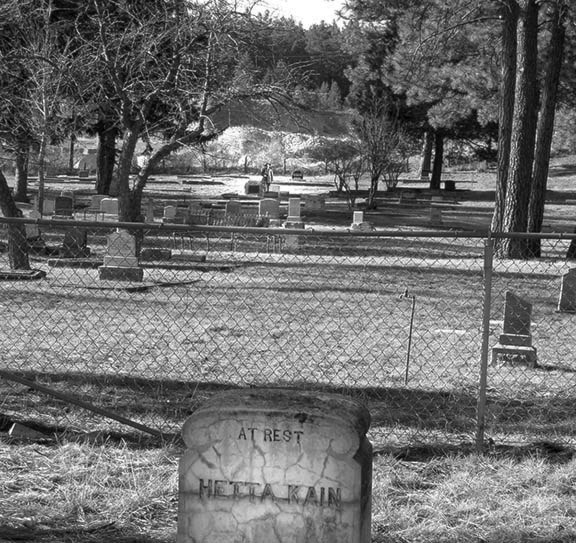Jim Cameron
Of all those who repose in the Cranbrook Old General Cemetery undoubtedly the most famous is mountaineer Conrad Kain, known worldwide for his climbing exploits and guiding abilities.
It is ironic that he rests in our local cemetery as he rarely, if ever, spent any time in Cranbrook other that the few weeks before his death. On the other hand, we will take our celebrities as we find them and he is buried where he wished to be buried ... almost.
Conrad Kain was born in the small village of Nasswald, Austria, on Aug. 10, 1883. His family was very poor. His father, a miner by trade, died when Conrad was young, leaving his mother to raise her four children of which Conrad was the eldest. He spent a few years in a local Protestant school with more than 100 children taught by a single teacher. By his own admission he was practically illiterate when he left the institution, not least due to his general disinterest. He much preferred time spent alone and outdoors, convincing more than one observer that he would never amount to anything.
At age 14 he took up goat herding and the following year began work in a stone quarry, an occupation upon which he would fall back from time to time. It was only when he discovered he could neither read nor calculate his pay cheques that he undertook to school himself in mathematics and language.
He soon began travelling widely until, in 1904, he found his true calling, that of mountaineer.
Within two years he became an officially recognized professional mountain guide. He worked steadily in Austria, France and Switzerland, including time on the rugged Matterhorn. He also began studying English in preparation for his immigration to Canada in 1909.
1910 found him surveying the B.C. Purcell Range and exploring the rugged Banff area. He travelled to the Altai Mountains in Siberia in 1912, then to New Zealand in 1913. For the next three years he spent summers guiding in both New Zealand and Canada. While at home he resided in the small settlement of Wilmer, B.C., near Invermere. Surrounded by mountains, the community maintains its rustic if not downright esoteric charm to the present day.
Conrad was not a large man; at only five feet, five inches tall he might, at first glance, appear to be other than what he was: a tough, tenacious mountain man in formidable shape, capable of survival in the most challenging of conditions.
He kept a diary for many years which eventually formed the basis of a biography by J. Thorington. Titled "Where The Clouds Can Go", it remains required reading for all who are captivated by the mountains, not least for the many vivid descriptions of his climbs (he is credited with 60 first ascents in B.C. alone), but also for his humorous, down-to-earth and endearing prose.
While he was comfortable in the company of his fellow mountaineers his independent spirit allowed him to spend great lengths of time alone. Such was the case during the winter of 1917, which found him cosily nestled in a cabin he built himself on the Simpson River in the Rockies. Completely isolated and snowbound for the winter, he happily contented himself with his dog, 16 mice that he tamed and taught tricks, a big snake named "Satan" who often lay near the fireplace and was fond of music, a very ugly but good-natured toad and a large porcupine who visited daily to shake hands. "It seems they all love me. I know that I love them all," he states.
Still, he was at a point in his life that he was obviously in search of more than small woodland companions and, so saying, married Henriqueta "Hattie" Ferrara a few months later. Formerly in the employ of well known mountaineer A.H. McCarthy, Hattie was a quiet, intelligent widow with whom Conrad was very happy. Born in Georgetown, British Guyana, on June 8, 1884, Hattie attended convent school as a youth. She immigrated to Canada two years before her marriage to Conrad.
The newlyweds lived in a small cabin in Wilmer, eking out an existence as farmers and fur-traders in combination with Conrad's guiding, an occupation in which Hattie had little interest, preferring to tend the farmstead. The couple maintained their home at Wilmer throughout their marriage while Conrad continued to trek the hills he loved.
In February, 1933, Hetta was brought to the St. Eugene Hospital in Cranbrook for a major operation from which she never recovered. She died on February 9 and was buried in the Old Roman Catholic Cemetery. Conrad missed her terribly but did not have overly long to grieve. In early January, 1934, he too, entered the St. Eugene Hospital suffering from what was diagnosed as "encephalitis lethargica", a disease that had reached world-wide epidemic proportions some years earlier.
Conrad Kain died on Feb. 2, 1934. Before his death he expressed a great desire to be buried next to his wife but was, in fact, interred some distance away in the Old General Cemetery where his gravestone, purchased by friends, has attracted devotees ever since.
janusthenandnow@shaw.ca
